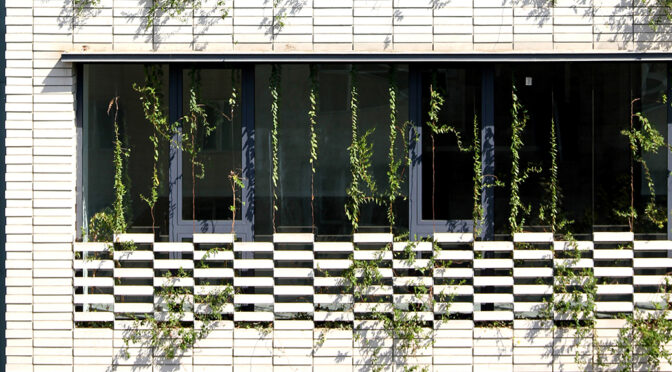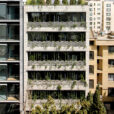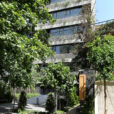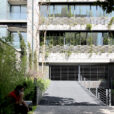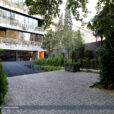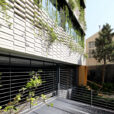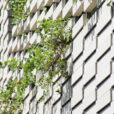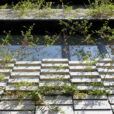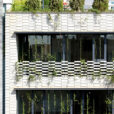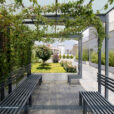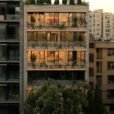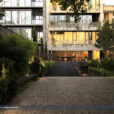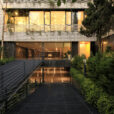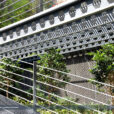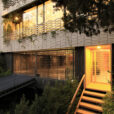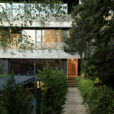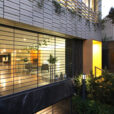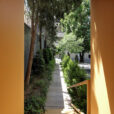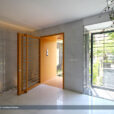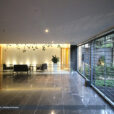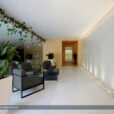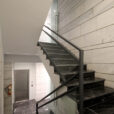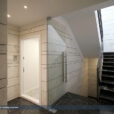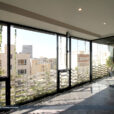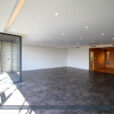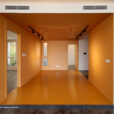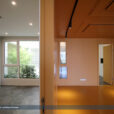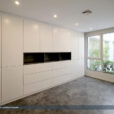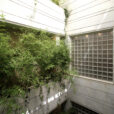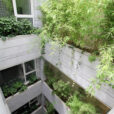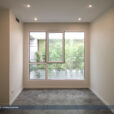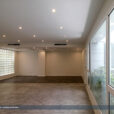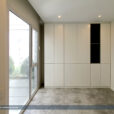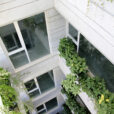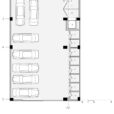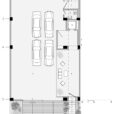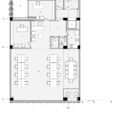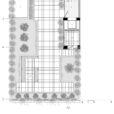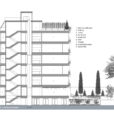ساختمان اداری سروستان
کارابن (مهدی پناهی)
موقعیت: تهران، ایران
تاریخ: ۱۴۰۰
مساحت: ۲،۲۸۰ مترمربع
وضعیت: ساختهشده
کارفرما: آقای صبحروان
همکار طراحی: رسول بخشی
عکس: مهدی پناهی
سروستان یک ساختمان اداری در منطقه مسکونی/اداری پاسداران تهران است، منطقهای که از یک طرف، تراکم و جمعیت قابل توجهی در حوزه مسکونی دارد، و از طرف دیگر، شاهد تغییر کاربری ساختمانهای مسکونی موجود به ساختمانهای اداری است که در آینده نزدیک به افزایش تراکم جمعیتی/ترافیکی این منطقه منجر خواهد شد. همچنین کوچههای این محدوده به دلیل داشتن عرض کم و احداث ساختمانهای پنجطبقه و بعضا بلندمرتبه در آنها، و نیز ترافیک بالای خودروهای عبوری، فضایی شلوغ و آشفته را تجربه میکنند. بر این اساس، ایده اصلی پروژه، ایجاد فضایی باز با حداکثر فضای سبز ممکن بود تا در این تراکم و شلوغی، حس آرامش و انرژی طبیعت را به رهگذران و همسایگان منتقل کند. از اینرو، با توجه به غیر قابل استفاده شدن حیاط در ساختمانهای جدید، دیوار حیاط را در مرز پروژه و خیابان حذف کردیم تا امکان ارتباط رهگذران و همسایگان با حیاط و فضای سبز آن میسر شود و آنها بتوانند اندکی آسایش را در مدت هرچند کوتاه برخورد با پروژه تجربه کنند. همچنین برای تداوم این حس و انرژی، و اثرگذاری بیشتر بر مخاطبان، فضای سبز را تا نما و لبه بام امتداد دادیم.
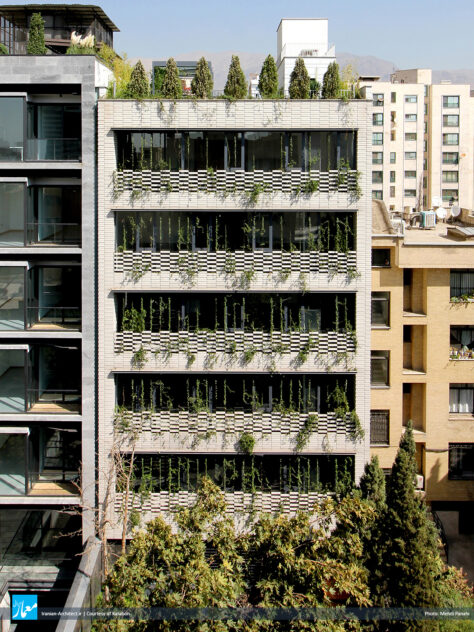
در طراحی نما، از یک طرف، نیازمند استفاده از حداکثر سطح آن برای دریافت نور، و از طرف دیگر، به دنبال سطوح و جزئیاتی بودیم که امکان رشد و نمو آزاد گیاهان و نیز امکان دیدهشدن آنها را هم برای ساکنان و هم برای همسایگان و رهگذران فراهم کند. از اینرو، با نیمنگاهی به ساختمان آجری همسایه، و بر مبنای اعتقاد به لزوم استفاده از مصالح بومی پایدار و باهویت در معماری معاصرمان، آجر را به عنوان مصالح اصلی و یکپارچه نما انتخاب، و برای پیادهکردن جزئیات مورد نظر، از چیدمان شبکه آجری در سادهترین شکل آن استفاده کردیم. همچنین برای کاهش جذب انرژی تابشی خورشید و نیز دیدهشدن بهتر گیاهان در زمینه روشن، رنگ نما را سفید در نظر گرفتیم.
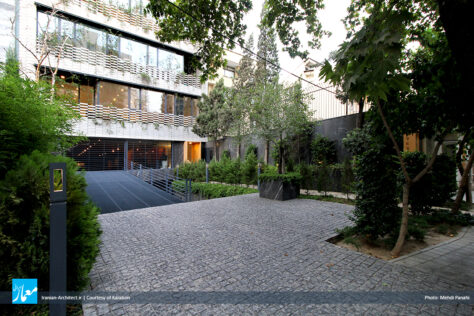
با توجه به نامعلومبودن حوزه فعالیت مشتریان احتمالی واحدهای پروژه، طراحی فضاهای داخلی بهصورت پلان باز، و با سادهترین شکل تقسیم فضایی و بهینهترین امکانات خدماتی صورت گرفت.
Sarvestan Office Building
Karabon (Mehdi Panahi)
Location: Tehran, Iran
Date: 2021
Area: 2,280 sqm
Status: Completed
Client: Mr. Sobhravan
Design Team: Rasool Bakhshi
Photo: Mehdi Panahi
Sarvestan is an office building in the Pasdaran residential/office area of Tehran, an area that has a significant density and population in the residential area, which is changing from existing residential buildings to office buildings. Therefore, in the near future, the population/traffic density of this area will increase. Also, the alleys in this area are very crowded, due to their narrow width and the construction of five-story and sometimes high-rise buildings in them, as well as the high traffic of passing cars. Based on this, the main idea of the project was to create an open space with as much green space as possible, to convey the sense of peace and energy of nature to passers-by and neighbors in this dense and crowded environment. Therefore, due to the unusability of the yard in new buildings, we removed the yard wall at the border of the project and the street, so that passers-by and neighbors can communicate with the yard and its green space, and they can experience some comfort, even in a short period of time. Also, to continue this feeling and energy, and to have a greater effect on the citizens, we extended the green space to the facade and the edge of the roof.
In the design of the facade, on the one hand, we needed to use the maximum surface to receive the most light, and on the other hand, we were looking for surfaces and details that would allow the plants to grow freely, and also allow the plants to be seen by both residents and neighbors and passers-by. Therefore, considering the neighboring brick building, and based on the belief in the necessity of using sustainable and indigenous materials in our contemporary architecture, we chose brick as the main material of the facade, and used the brick grid layout in the simplest way, to implement the desired details. Also, in order to reduce the absorption of the sun’s radiant energy and to make the plants better visible in the bright background, we considered the color of the facade to be white.

